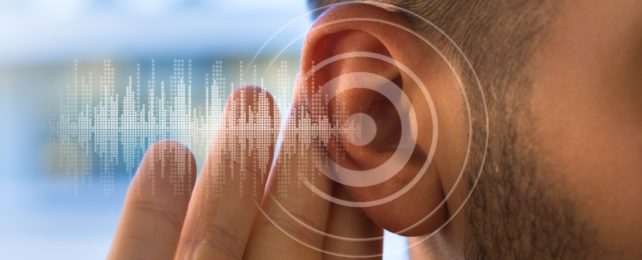If you struggle to keep up with fast-paced chatter or conversation in noisy rooms, it might be down to problems with the brain processing rapid changes in sound. A new study presents a training technique that could help manage the issue, and boost listening ability.
Known as rate discrimination training, it involves practicing how the brain can differentiate between the speed of sounds. And as the study shows, the technique could potentially improve the hearing of millions of older adults, bearing in mind of course that our ability to sift through sounds tends to decline as we age.
Noticing subtle changes in sounds relies on the brain's ability to process sound stimuli over time, called auditory temporal processing. It doesn't just affect our understanding of speech; it helps us make sense of every sound that reaches our ears.
"We've seen some evidence that these temporal processing deficits might be improved in animal models, but this is the first time we've shown it in humans," says auditory neuroscientist Samira Anderson from the University of Maryland.
A total of 40 volunteers completed rate discrimination training as part of the study. This involved completing nine sessions, each 45–60 minutes long, during which participants were asked to distinguish between sets of tones played in a rapid sequence.
Through the training, these individuals had to spot changes in frequency – identifying which tones in a series had a higher or lower pitch. Similar tests were used before and after to assess each participant's ability to pick out changes in the audio they were hearing.
Compared with the control group of 37 participants whose sessions involved a simpler tone detection exercise, those who underwent the rate discrimination training showed an improvement in their ability to pick out changes in audio pitch and speed.
This was consistently demonstrated across young and older participants, including older participants with some level of hearing impairment.
Overall, audio detection test scores were better after the training process than they were beforehand – with some older volunteers getting results after training comparable with younger volunteers before training.
The results "demonstrate the potential for auditory training to partially restore temporal processing in older listeners and highlight the role of cognitive function in these gains," write the researchers in their published paper.
Previous studies have also explored this idea: for example, musical training has been shown to improve temporal processing abilities in people with normal hearing. Scientists have also seen evidence that the brain does retain some plasticity (a capacity for modifying or rewiring its connections) into old age.
The current study was designed to investigate these areas further, particularly in looking at how auditory temporal processing in younger and older individuals might be affected with these kinds of rate training exercises.
As always, there's more work to be done. For a follow-up study, the researchers are keen to recruit additional groups of people to gather more data on rate discrimination training and its potentially positive effects.
The team also wants to look at how demands on memory might change the impact of these exercises.
"The results offer great hope in developing clinically feasible auditory training programs that can improve older listeners' ability to communicate in difficult situations," says lead researcher for the project, audiologist Sandra Gordon-Salant, also from the University of Maryland.
The research has been published in the Journal of the Association for Research in Otolaryngology.
